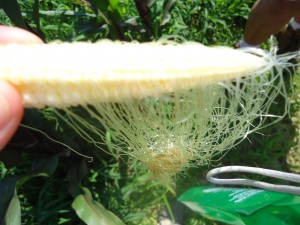Curriculum! Externship experience! How can I share the experience with my students? How can I relate the experience so that they are filled with the same curiosity that I am? I can’t. It is just not possible to take graduate level work and push it into my 8th grade lesson.
However, I can model the experience that I have had. The most rewarding part of my externship was just exploring and learning about all the different applications of genetically modified organisms (GMOs), the research being done in labs, and social science surrounding biotechnology.
I want my curriculum to give my students an opportunity to investigate and to understand using the information that they gather from readings, video clips, and group discussions. Then I want to give the students time to discuss new biotechnology topics with peers. I also want to provide a lab experience so the students can model part of the process used to create transgenic organisms. Finally, I want to provide a podcast to reinforce the basic knowledge needed to understand each of the learning objectives for the lesson. I think the combination of giving the students an opportunity to explore several applications of biotechnology and then reinforcing the baseline objectives will help them be confident learners.
This week I was excited to attend a great program at NCSU. A last minute administrative issue canned that plan. But it opened an even more awesome opportunity to attend the NCSU Crop Research Center workshop. The workshop turned out to be a great way to get ideas for my lesson. The workshop today made me realize that my Kenan lesson plan is a work in progress and I think it will evolve as I take advantage of workshops and seminars about GMOs. Below are some pictures of corn hybrids being researched at the center. They were created using a seed bank. This particular selection of seeds (known as a heritage selection) came from all the corn planted in a field in western Carolina about one hundred years ago. At the time, no selection was done by the farmer.

